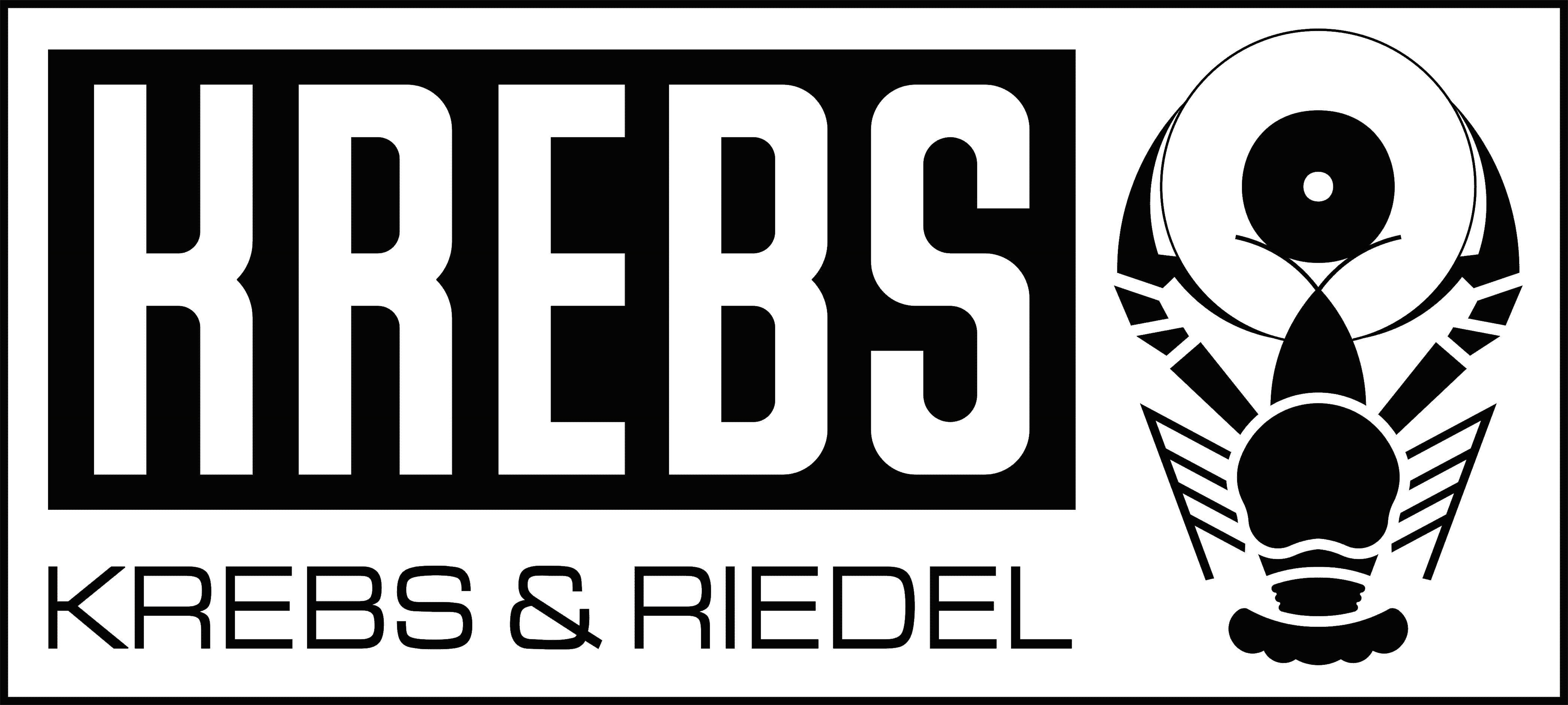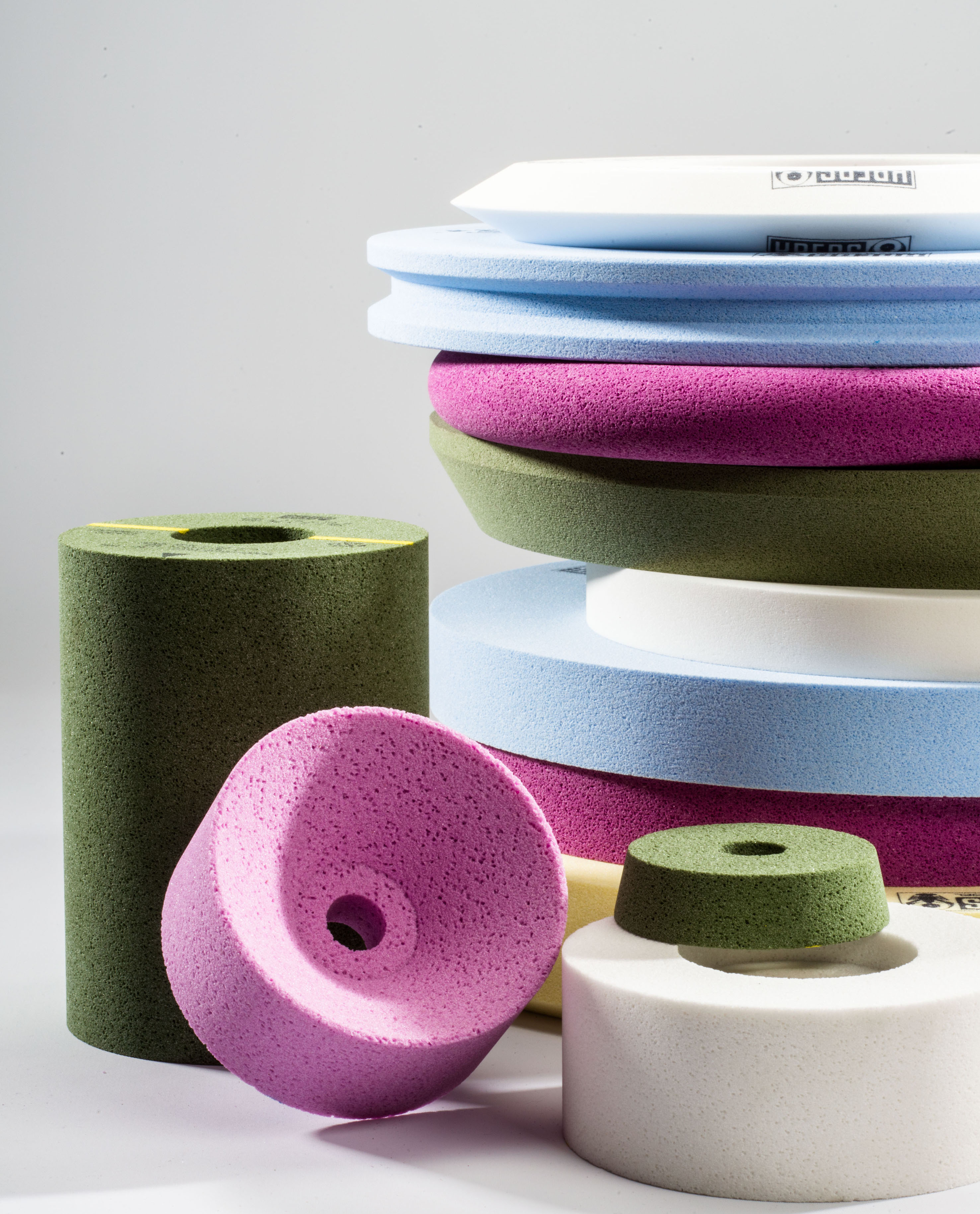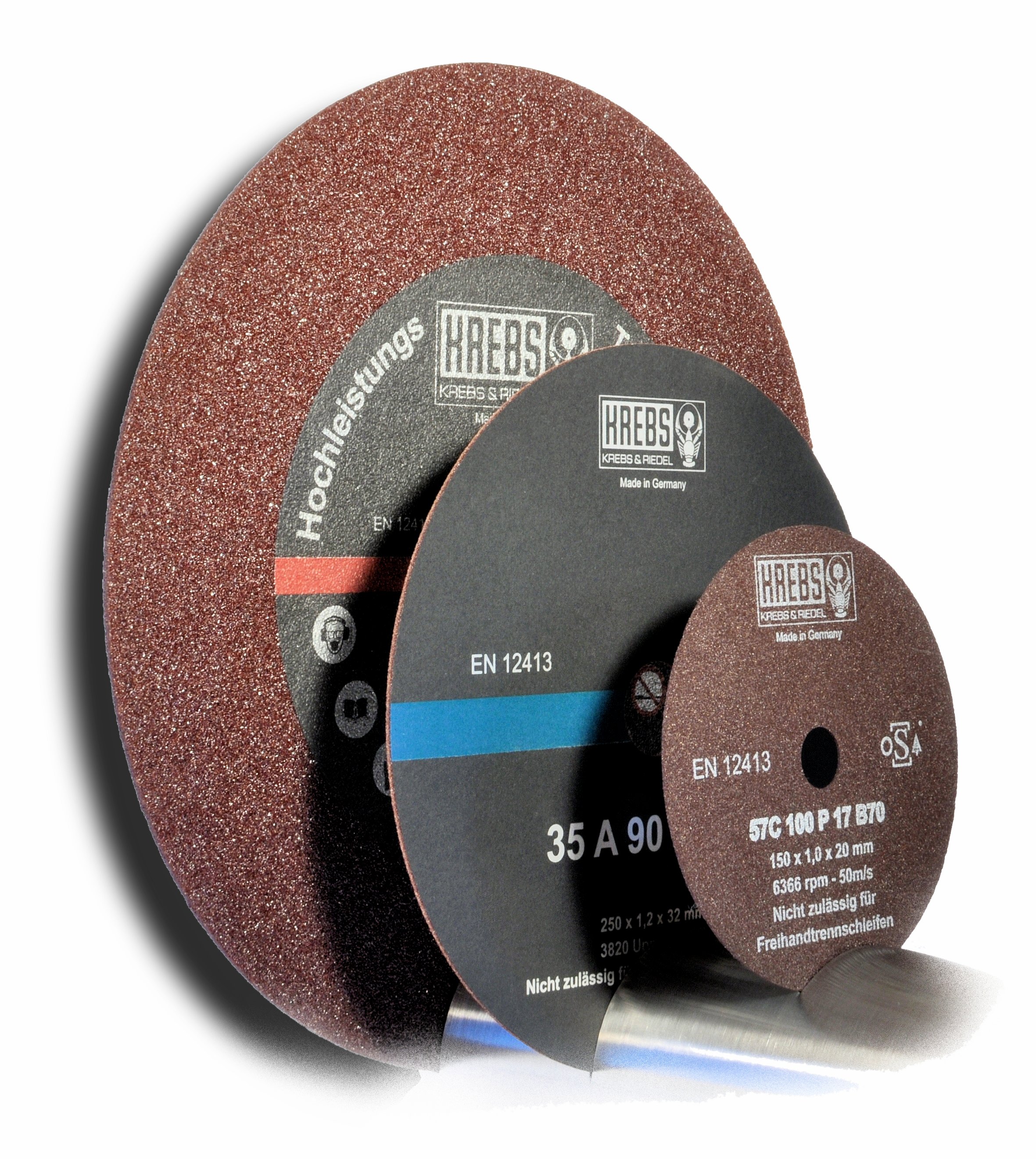Vitrified bond systems have largely prevailed in precision grinding. A major advantage of vitrified bonding is the controllable porosity. The appropriate microstructure is selected depending upon the size of the contact zone between the work piece and the grinding wheel.
Generally speaking, the larger the contact zone, the more open and porous the grinding wheel needs to be. Highly porous grinding wheels are in particularl needed for productive deep and creep-feed grinding processes to transport the cutting fluid directly into the contact zone and to optimally remove the generated grinding chips and heat. A product of this group is for example the successful KREBS MULTO grinding wheels.



